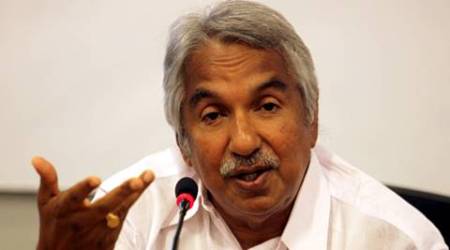 In Alappuzha, the government upper primary school in Velliyamkulam has increased student strength to 800 this year, from 300 five years ago. (Representational image)
In Alappuzha, the government upper primary school in Velliyamkulam has increased student strength to 800 this year, from 300 five years ago. (Representational image)
# Until two years ago, the government lower primary school at Vattarkkayam in Kerala’s Pathanamthitta had zero students and faced closure. It now has 22 students.
# Last year, the government lower primary school at Kuleri in Kasaragod only had 36 students in its four classes and was identified for closure. This year, there have been 22 admissions in Class 1.
# The Punnakkad model school at Karuvarakkundu in Malappuram has registered a three-fold increase in student strength over the last six years, and now has 750 students.
# In Alappuzha, the government upper primary school in Velliyamkulam has increased student strength to 800 this year, from 300 five years ago.
A CONCERTED push by the Kerala government, combined with a growing people’s movement in favour of public schooling, has meant that for the first time in a decade, the number of students enrolled in Class 1 in government and government-aided schools increased this academic year: 2,49,533 in the 2016-17 academic year to 2,61,731 this year, an increase of 12,198.
The numbers went up across classes in these schools — this year saw 1,45,208 new admissions for Classes 2-9, an increase of 16,710 over last year.
These numbers are significant because over the last couple of decades, the student population in government and aided schools have been dipping every successive year in the state. This year too, the total number of students in government and aided schools dropped by 20,837 — yet, it’s a big leap from last year’s drop of 60,592.
This dip in enrollment numbers, attributed to the state’s declining birth rate, coincided with the rise of English-medium private schooling. In 2006-07, the state had 587 CBSE schools, which rose to 1,360 in 2016-17. As a result, several government/aided schools were declared “uneconomic” — with less than 25 students each — and by 2016-17, there were 5,715.
Over the years, the neglect of public education began to be reflected in the infrastructure of government schools, with rickety benches, unplastered walls, thatched sheds and poor sanitation and drinking water. In 2000-1, 17 per cent of government schools functioned from thatched sheds.
State Director of Public Instruction K V Mohan Kumar says the turnaround, aided by the Centre’s Sarva Shiksha Abhiyan, funds from local civic bodies and the Local Area Development Funds of MPs and MLAs, began sometime last year when the LDF government identified “revitalisation of public school system as one of its missions”.
At the start of the last academic year, the government took over four ailing, aided schools. Gradually, Kumar says, several government schools got “smart” classrooms with connectivity, public address systems, new toilets and drinking water.
Kumar says the government soon realised that one of the factors that led to the neglect of government schools was that parents were attracted to private English-medium schools. “So we introduced English education in our schools from the pre-primary level. That, according to me, is one of our key successes.’’
The government also ensured it got technology into its classrooms. “We launched a plan to convert 1,000 government schools into centres of excellence and 45,000 classrooms into high-tech ones. This created confidence among parents about the public education system,’’ he says.
Education Minister C Raveendranath says the government has decided to set apart Rs 2,000 crore for infrastructure development over the next five years, adding that 45,000 classrooms in secondary and higher secondary schools would be made “high-tech” at a cost of Rs 490 crore.
Kerala School Teachers Association president K J Harikumar says, “Now, most government schools offer IT courses. In the past, unaided and CBSE schools used to attract students by promising IT-enabled education and English-medium education. Once we started giving all this at no extra cost to the students, the trend changed.”

